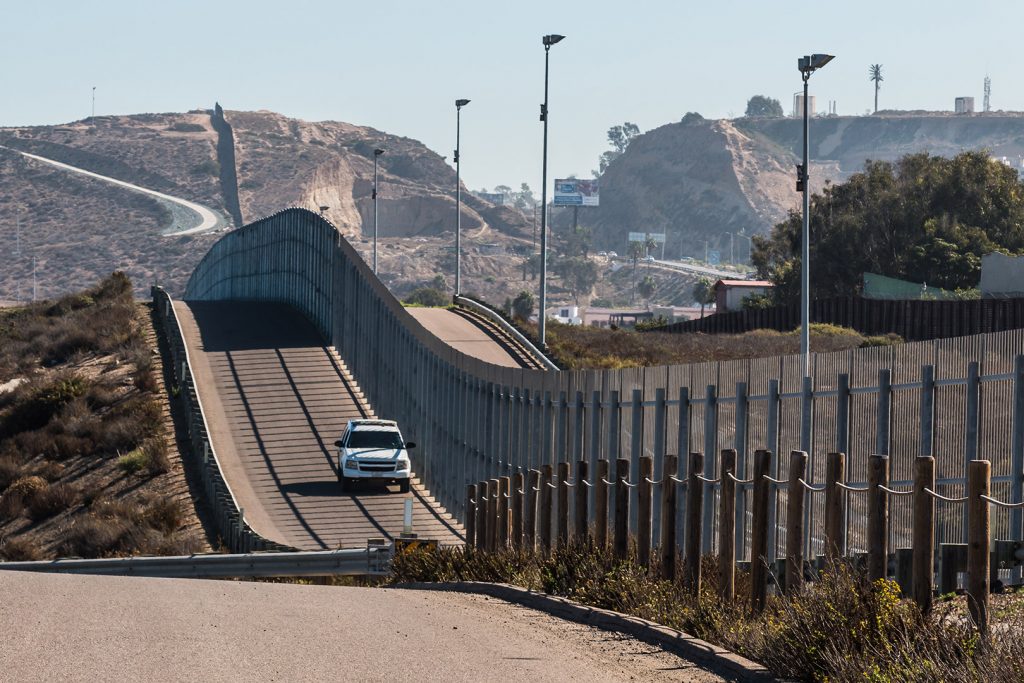
The President’s Friday announcement that he was declaring a state of emergency along the country’s southern border – with an eye toward allocating funds for the construction of his cherished border wall – was met with predictable outcry from both Democrats and legal experts across the country.
While Republicans mostly rallied around the President’s decision, constitutional law scholars argued over the limits of the President’s emergency powers and whether the emergency declaration made on February 15 runs afoul of the constitution.
Regardless, the emergency declaration will be immediately challenged in court, and it seems inevitable that the Supreme Court will ultimately have to weigh in on the controversial move.
A Brief History of the Border Wall
Donald Trump’s presidential campaign was famously uninterested in policy specifics, but the candidate was clear on one point: he wanted to build a wall along America’s border with Mexico. (He also claimed that Mexico would pay for it, but that element of the proposal appears to have been forgotten).
However, while Republicans controlled the White House and both houses of Congress for two years, GOP leaders made no serious attempts to fund the President’s border wall. And the White House spurned an opportunity to secure the funding the President claimed he wanted: in early 2018, the President and Democratic leadership reportedly had a handshake agreement on a compromise to provide $20 billion for the border wall in exchange for legal status for so-called “Dreamers.” However, immigration hardliners in the White House, including then-Chief of Staff John Kelly and adviser Stephen Miller, convinced the President to kill that deal.
Starting in December of 2018, after Democrats won their striking midterm victories and seized control of the House, the President began demanding funding for the border wall as part of a necessary bill to fund the government. After initially indicating he would support a bill in December that would have kept the lights on without providing border wall funding, the President backtracked and announced his opposition, leading to the longest government shutdown in the nation’s history.
The shutdown was widely perceived to be a political catastrophe for the President and Republicans, and the President eventually signed a bill to fund the government without receiving any funds for his wall. That bill contained a provision empowering a bi-partisan conference committee to present ideas for border security within about a month.
That group of lawmakers came back with a plan that included a little more than a billion dollars for fencing and other barriers, well short of the President’s demands. Senate Majority Leader Mitch McConnell announced on Thursday that the President would sign the bill in order to keep the government running and then declare a state of emergency at the border.
Unclear Legal Status
The President’s emergency declaration envisions directing approximately $8 billion to the construction of the border wall – mainly through re-directing money already appropriated to the military and for disaster relief. The White House argued the declaration was justified by a “flood” of drugs and violent criminals coming across the border with Mexico.
The legal prospects of this declaration are murky, at best. Most legal experts agree that the President has essentially un-restricted power to declare an emergency – Congress has largely ceded those powers to the executive branch over the last several decades.
The question is whether or not that declaration gives the President the power to unilaterally build a wall that Congress has expressly refused to authorize. Law professor Bruce Ackerman, writing in The New York Times, has argued that it would be illegal for the President to use the military to build the wall.
In addition, some experts question whether the President has the statutory authority to appropriate funds for a wall, even in a state of emergency. Specifically, the President will need to argue that the wall is a necessary response to a military emergency, which will likely be difficult to prove.
There are other legal concerns as well. First, contractors and others affected by the re-appropriation of funds from other projects to the border wall will have standing to challenge the law in court. Second, any wall construction will require the seizure of private land through eminent domain. This could prove to be the thorniest legal issue of all, as owners of the seized land would be able to sue in federal court.
Whatever the outcome of these lawsuits, experts agree they are likely to take years to sort out in court. The eminent domain lawsuits alone could drag on for two or three years, which would place their resolution beyond the end of the President’s first term.
As a result, while the outcome of the inevitable legal battles is up in the air, a new border wall seems a long way from reality, even with the emergency declaration.



Leave a Comment